It was a busy week in the Upper Egyptian cities of Qena, north of Luxor, and Luxor in preparation for the winter season.
A delegation from the Ministry of Tourism and Antiquities led by Ahmed Issa, visited the two cities; Qena to inaugurate two 4th and 6th century monasteries and Luxor for following up restoration work in ancient tombs there.
In Qena, they inaugurated the monastery of Saint Pisentius and Monastery of Saint George, and the complex of Saint George.
It is expected that the opening of these monasteries after restoration will put it on the tourist map of Egypt and will attract more visitors to it, especially those interested in religious tourism.
Both monasteries are located between the Dendera Temple, and the ancient temples in Luxor.
The history of the Monastery of Saint George Complex dates back to the end of the fourth century and the beginning of the 5th century AD. It consists of five churches: St. George’s, Virgin Mary’s, St. John’s, Archangel Gabriel’s, Archangel Michael’s, the latter no longer exists.
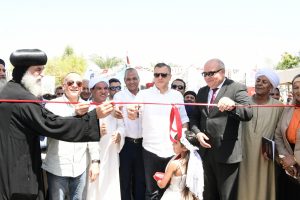
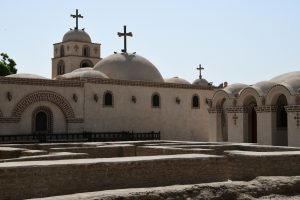
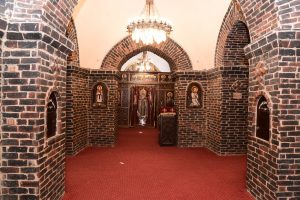
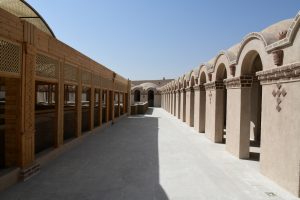
The project included the restoration and maintenance of the main St. George Church and the foundation reinforcement. A small room was discovered from the inside under the baptismal room on the northwestern side of the church called the Myron Dome. It was used to preserve the holy chrism oil.
Some granite column bases and a Corinthian column were discovered inside the altar of the church, as well as a limestone plate with Coptic inscriptions on a tombstone dating back to the 14th century. The columns and arches were restored and reinforced with the same building material. Various models of crosses were found on the arches.
In the Church of St. John, the walls were restored, the efficiency of the electricity network was raised, and gutters were made to drain rainwater.
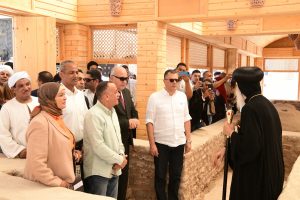
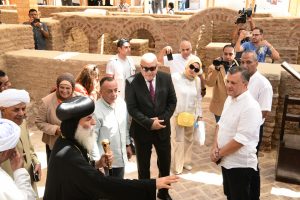
The work team also restored the Church of the Virgin Mary by covering its walls with a glass truss erected on wooden columns on the outskirts of the church, at a height of 2 metres from the floor level, and made glass barriers between the columns to see the excavations of the church from the outside.
During the restoration work, bases, remnants of walls, and the remnants of the church structure were found. The restoration work also included the cells of the monks.
The complex was registered in the list of Islamic and Coptic monuments in 1951.
The history of the Monastery of Saint Pisentius dates back to the 6th century AD. It was registered among the Islamic and Coptic monuments in 2008. The monastery is attributed to Saint Pisentius, who witnessed the Persian invasion of Egypt in 525 BC.
The restorers uncover the remains of the saint himself which are located on sandstone, on which were found a carving of the Holy Cross and some Coptic inscriptions.
The restoration project included consolidating and restoring the foundations of the church, its walls, columns and vaults, repairing cracks in the walls and domes, removing the old mortar layer and restoring it. Replacing and renewing the electricity network.
In Luxor, the delegation inspected the latest developments in the restoration of some ancient tombs in the Valley of the Kings, such as the the tomb of King Ramses IX, one of the kings of the 20th Dynasty, King Seti II and King Siptah, which date back to the era of the 19th Dynasty in the Valley of the Kings. They also inspected the tomb of Sin Najm in the Tombs of Deir El Medina, and the tombs of Sennefer and Rekhmire in the Tombs of the Nobles.

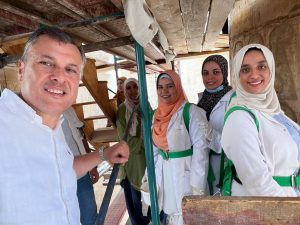
The minister called on the Egyptian Federation of Tourist Chambers and the Egyptian Travel Agents Associations to direct tourism companies to purchase the combined tickets offered by the Supreme Council of Antiquities (SCA) at a 5 per cent discount and valid for six months and the payment of these tickets shall be by bank transfers.
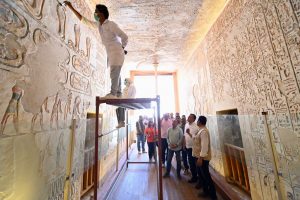
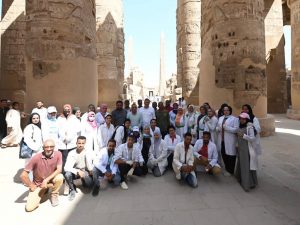
SCA Secretary General Mostafa Waziry said that the restoration of the southern side of the Great Hypostyle Hall in the Karnak Temple was completed, with 65 columns out of 134 columns. The restoration includes removing dirt and soot and showing the original colours of the temple.
All this was done by a young Egyptian team from the SCA in co-operation with graduates from the restoration departments of Luxor and South Valley Universities and the Institute for the Restoration and Conservation of Antiquities in Luxor.
At the end of the tour, the delegation met with groups of tourists from the US and Argentina, during their visit in the Valley of the Kings and Karnak Temples. The tourists said they felt safe, secure and enjoyed great hospitality in Egypt, which they did not witness in any other place they visited in the world.




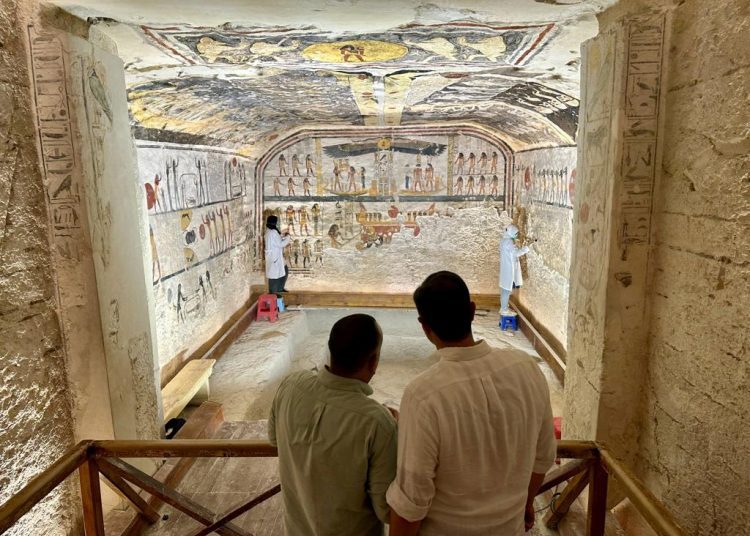


Discussion about this post